19 July 2023
Today has been a little calmer than yesterday. At least no lightning bolts destroying trees – yet. The afternoon is still young.
One good event that did happen yesterday was I reconnected by phone with an old coastie buddy, Chip Sutton, an electricians mate on board the CGC Reliance. His cubby was next to the radio room on the Reliance and we depended on him to keep our electronics running.
I never will forget the day we tried everything with out main transmitter, an old tube model and we couldn’t get it to work. Chip worked on it for hours and finally threw up his hands and said there was only one thing left to do – give it the smoke test. I asked “smoke test?” He said “yea, you run the resistance up enough and see what burns out in the transmitter and that’s probably causing the problem.” It worked!
He now lives in north Georgia at a place called Sugar Hill. I know the place. It’s on my way to the waterfalls of North Georgia and I pass that exit on the interstate all the time. Next time I promised to stop in and chew the fat with Chip.
Before I was discharged from my hospital stay at Holy Cross, their app MyChart scheduled me for a visit with my primary care doctor. I showed up and when he walked in, he looked at me and I looked at him and we both wondered why we were there. He and I concluded that when I falsely tested positive, the person entering the information must have automatically scheduled a follow up with the primary. We talked a little and he was pleased I looked well and then I left.
Holley and Jim stopped by this afternoon and marveled at my lightning modified Bismarck palm.

My neighbor across the street agreed to cut it down just before bulk trash day (1st Wednesday of the month) for $400. I suggested $500. That’s one damn big tree and you really have to know what you are doing when you fell that thing. It’s worth it. Most tree trimmers would charge at least a thousand for a tree that size. He always low balls me on price – the benefit of being a neighbor, I guess.
Holley and Jim brought over some plums, some couscous, a book, and some flowers. That’s the most flowers I’ve gotten in a long time. Judith and Chris sent me some yesterday and today I got some from Jim and Holley!
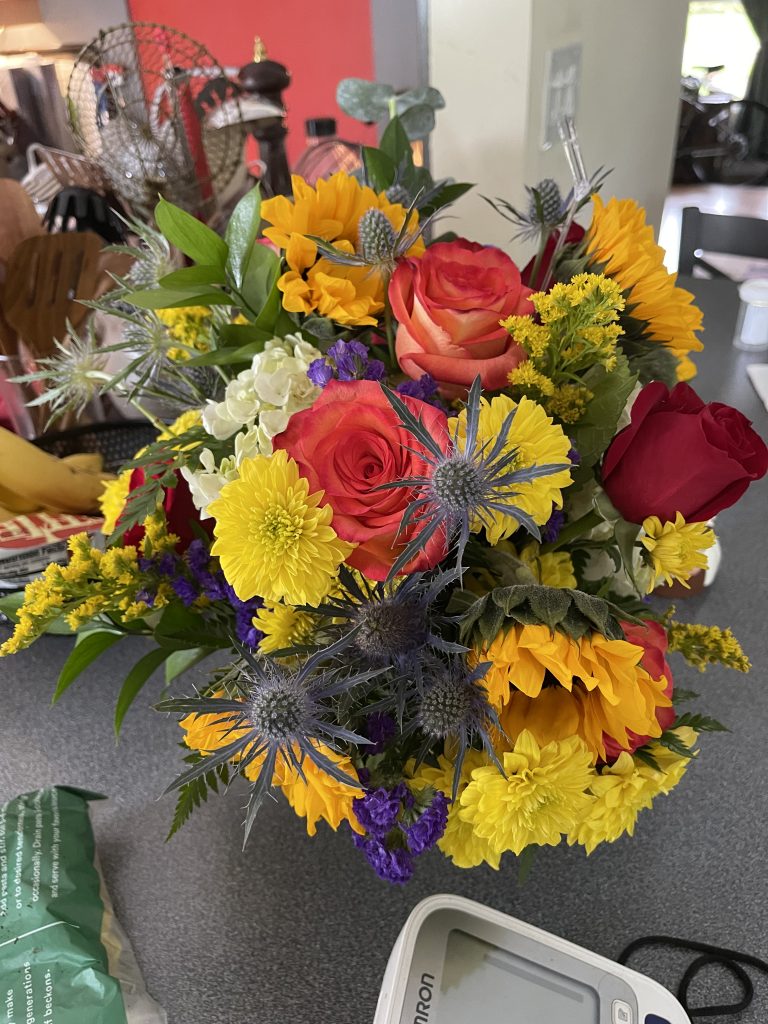
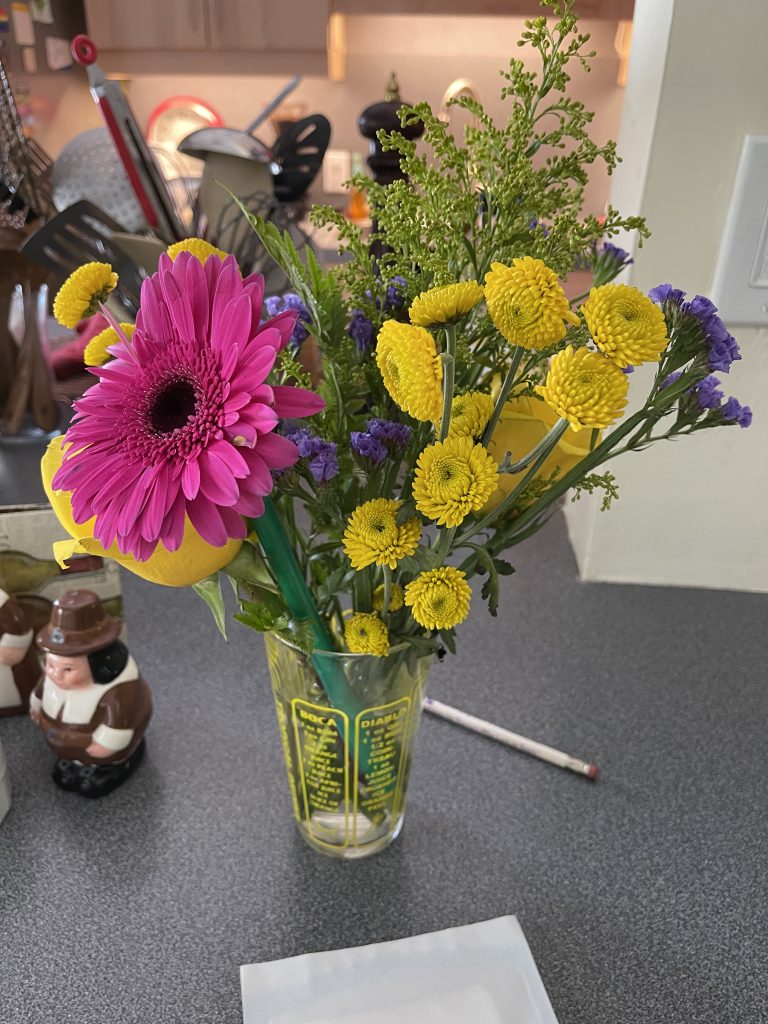
I feel well loved! Giving flowers to a botanist is always a good idea!
Tomorrow is my first post surgery meeting with Dr. Burgers. I hope I can get the very large bandage off and a small one in its stead to cover the point of exit of the drain. The big bandage is a pain.
I’m still doing bathing wipes. It’s been a week since my last shower and even though the bathing wipes help, it’s not the same as a good, long, hot shower. I also long for the day I can get back in the pool. I suspect the drain will stay in another week unless there’s a miraculous change overnight in the color of the fluid.
___________
Today’s plant is Seagrape. From the photo below, I think you can see why it gets the name. When the “grapes” get ripe, you can make jelly from them.
Just as an aside, scientifically, Seagrape is one word since it is not a true grape of the Vitaceae family. That holds pretty much through science. It’s dragonfly not dragon fly and tsetse fly not tsetsefly.
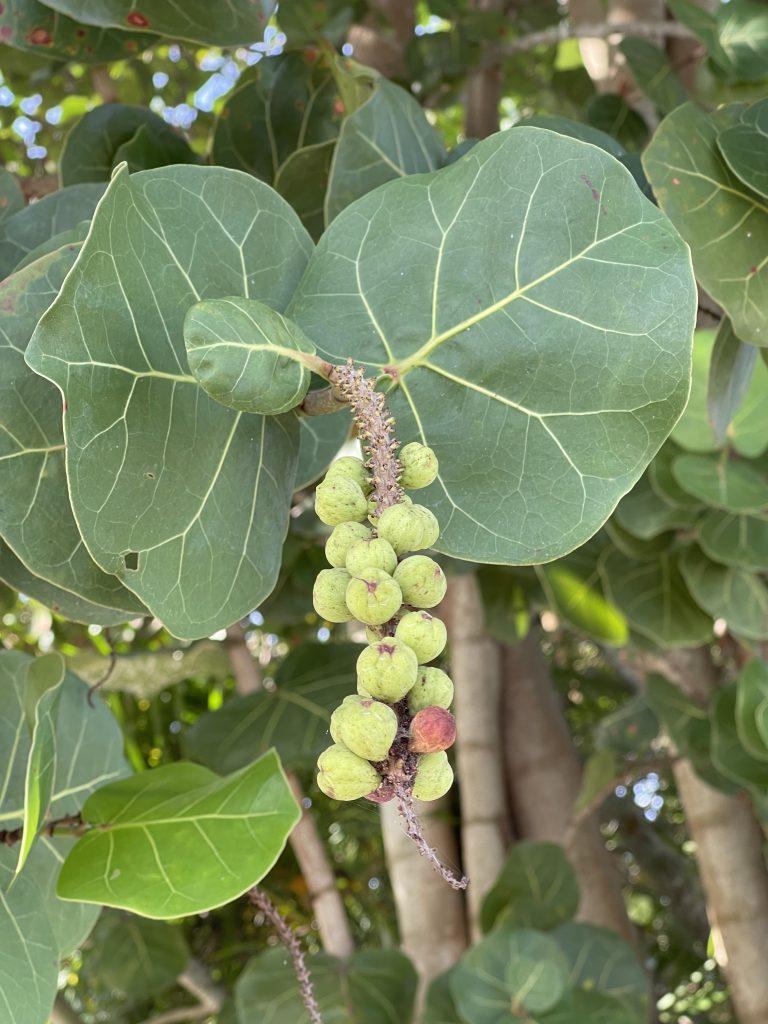
This is a native plant of South Florida, the Caribbean, Bahamas, Bermuda, and tropical America. It’s a member of the buckwheat family, Polygonaceae.
I always took my botany students by this plant to show them what “clasping” stipules look like. Stipules are leaf-like structures at the base of some leaf petioles (leaf stems). Most stick out from the plant but in this plant, they wrap around or “clasp” the stem.
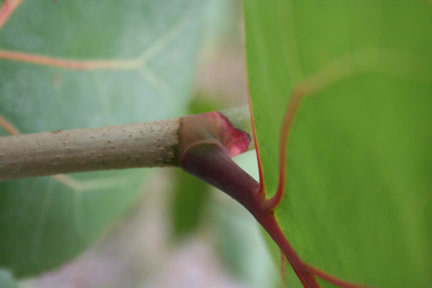
Seagrape can get tree size. I’ve seen some very large specimens in peoples’ yards and also in some of the local parks. Wikipedia suggests they help stabilize dunes and can shield sea turtle hatchlings from the lights of the city and ensure the hatchings head to sea (and towards the moon over the ocean).
I’ve never had any jelly or jam or wine from the grapes but am always on the lookout for it.
The family Polygonaceae is also know as the knotweed or smartweed family as well as buckwheat. One genus of plants is known as the edible buckwheat (Fagopyrum) and the genus Rumex is known as the sorrels, edible in salads.
My first experience with the family was in an Aquatic Plants course taught by Dr. Pullen at Ole Miss during my first year of graduate school. Several members of the genus Polygonum are known as aquatics or semiaquatics. One characteristic of the family is that it often has swollen nodes (a node is where a leaf attaches).
I got a real introduction to the family while on my cross country trips to national parks. The genus Eriogonum is very abundant out west. Here is what I’ve photographed so far.
| Genus/Species | Common Name | Location |
| Coccoloba uvifera | Seagrape | Bahia Honda State Park, Florida; Secret Woods Park, Fort Lauderdale |
| Eriogonum arborescens | Santa Rosa Island Buckwheat | Santa Rosa Island, Channel Islands National Park |
| Eriogonum arcelatum | Bakers Wild Buckwheat | Grand Canyon, South Rim |
| Eriogonum fasciulatum | Redtop Buckwheat | Joshua Tree National Park |
| Eriogonum flavum | Yellow Buckwheat | Yellowstone National Park |
| Eriogonum grande | Island Buckwheat | Santa Rosa Island, Channel Islands National Park |
| Eriogonum hemipterum | Chisos Mountain Buckwheat | Big Bend National Park |
| Eriogonum inflatum | Desert Trumpet | Death Valley National Park |
| Eriogonum jamesii | Antelope Sage | Cedar Grove, NM |
| Eriogonum latifolium | Coastal Buckwheat | Twin Peaks, San Francisco |
| Eriogonum leptocladon | Sand Buckwheat | Grand Canyon, South Rim |
| Eriogonum marifolium | Marumleaf Buckwheat | Crater Lake National Park |
| Eriogonum microthecum | Slender Buckwheat | Grand Canyon, South Rim |
| Eriogonum occidentalis | Western Dock | Mount Rushmore National Monument |
| Eriogonum ovalifolium | Cushion Buckwheat | Canyonlands National Park; Yellowstone National Park; Crater Lake National Park |
| Eriogonum tomentosum | Wild Buckwheat | Torreya State Park, Florida |
| Eriogonum umbellatum | Sulfur Buckwheat | Yellowstone National Park |
| Oxyria digyna | Mountain Sorrel | Bugaboos, British Columbia |
| Polygonumm bistortoides | American Bistort | Crater Lake National Park |
| Rumex acetosella | Sheep Sorrel | Crater Lake National Park |
| Rumex hastalus | Sour Dock | Reed Bingham State Park, Georgia |
| Rumex hymenosepalus | Canaigre | Arches National Park |
| Rumex obtusifolius | Bitter Dock | Reed Bingham State Park, Georgia |
One of the weirdest I’ve found in the family is Eriogonum inflatum or Desert Trumpet. It takes the inflated petiole to the extreme.
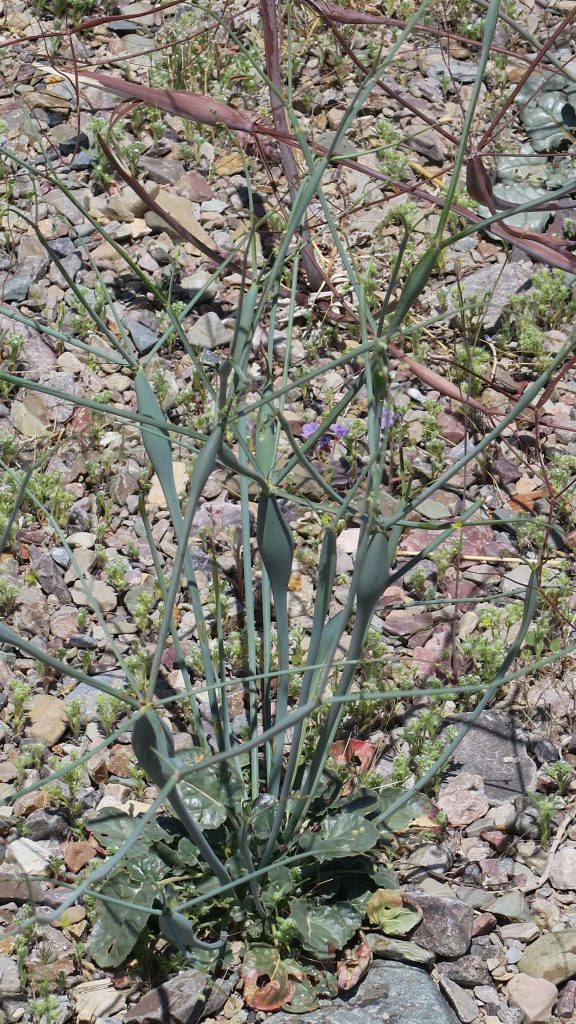
One of the prettiest I’ve found is Cushion Buckwheat (Eriogonium ovalifolium).
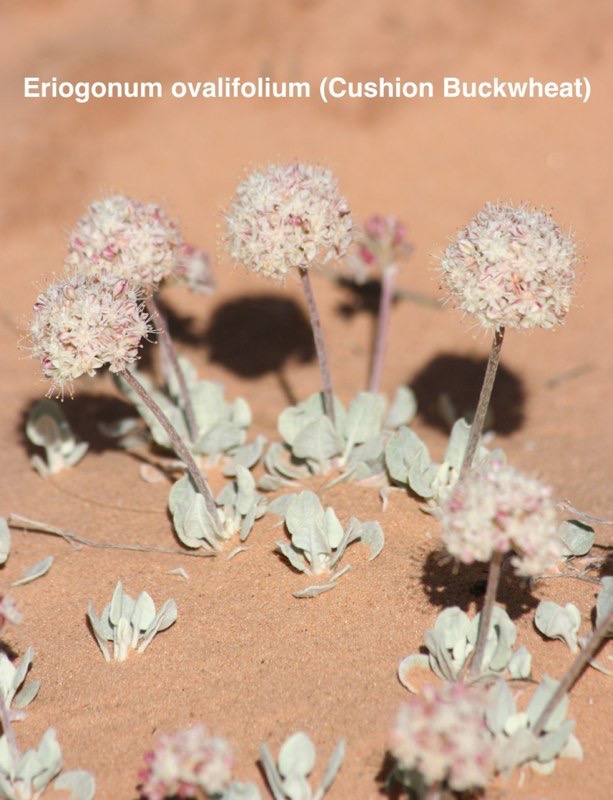
Stay tuned!
